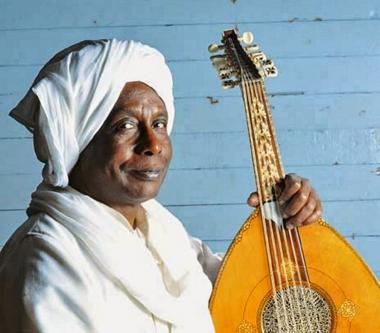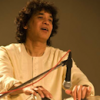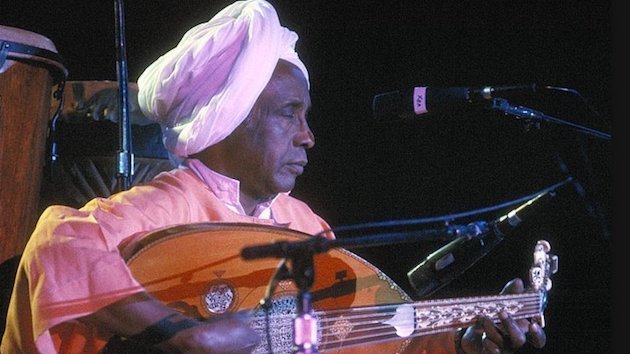
There were so many right reasons why the tribute to the late Nubian musician Hamza El Din, at San Francisco’s Presidio Theatre, was planned for March 21.
“It’s on the weekend of World Water Day,” notes the producer of the event, Mina Girgis, who’s also the founder of the Nile Project and a fellow at UC Berkeley’s Othering and Belonging Institute. He points out that the Nubians are descendants of one of the earliest civilizations of Ancient Africa, which flourished between Aswan, in the southern part of what is now Egypt, and Khartoum in the central part of what is now Sudan, and that they are “the people most connected to the Nile River.”
“There’s something in Hamza that flows in all of us, and is as deep and ancient as the Nile,” says Atesh Sonneborn, El Din’s former manager, who’ll be coming out to the tribute from New York City. “Being with him, I realized that every moment of his life was an artistic experience.”
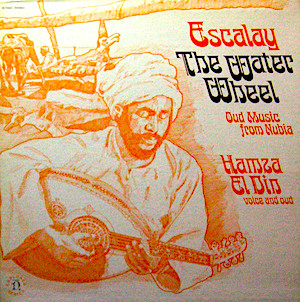
El Din’s most famous composition, Escalay, evokes a Nubian water wheel, rotated by harnessed oxen and positioned to raise water from the river, to irrigate fields of corn and wheat in the desert. Cherished by world music enthusiasts since El Din recorded it as the title track on a 1971 release on the Nonesuch label, Escalay was adapted for El Din’s collaboration with the Kronos Quartet on Pieces of Africa, their 1992 album, also on Nonesuch, which was said to have been the first album ever to top both the world and classical Billboard charts.
When I first interviewed El Din, in San Leandro in 1994, he demonstrated for me how he conveyed “the rhythm of the water” on his oud, the fretless ancestor of the European lute, with six sets of double strings. He noted that his native music is a cross between the quarter-tone modes of Persian origin and the pentatonic modes familiar in African nations south and west of Nubia. On both of the recordings of Escalay, El Din also sings, in a dry, affecting tone, and elsewhere on his first Nonesuch album he plays the tar, a large handheld frame drum found throughout North Africa and the Middle East.
A fan of his sounds since my college days, I found that a conversation with El Din in person also seemed to flow effortlessly and unaffectedly. “I was born in a village, surrounded by a tribe; I was in a huge family,” he told me. “Through them, I learned beauty, and I ended up to be a musician, because music, as you know, is beauty and order. What I learned from the desert was listening to this,” and he hummed.
El Din passed away at age 77 in 2006, after complications from gall bladder surgery. For the planned memorial tribute, named “As the Nile Flows” after the title of El Din’s unpublished autobiography, Girgis has assembled musicians and scholars who formed another sort of family, El Din’s associates in the Bay Area, where he lived, taught, and occasionally performed for several decades. They include former Kronos cellist Joan Jeanrenaud, tabla virtuoso Zakir Hussain, Grateful Dead drummer Mickey Hart, and Nigerian drummer Sikiru Adepoju, all of who are scheduled to perform at the tribute, which has been postponed from its original World Water Day scheduling to a time that’s safe and in keeping with the schedules of all of those so eager to participate.
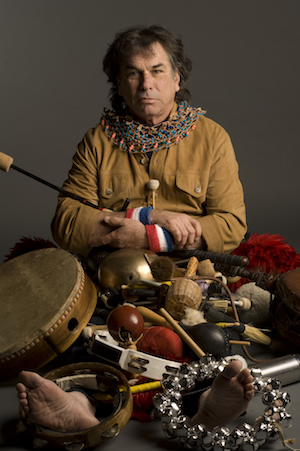
“If we get into a nice groove, we’ll honor Hamza’s spirit in the music,” assures Mickey Hart, from his ranch in the hills of Sonoma County. He’ll be invoking that spirit on the tar, in an improvised jam, joined by Hussain on tar and Adepoju on gudugudu — a Yoruban bowl-shaped drum played with two sticks — and/or ashiko, a tapered cylindrical drum from West Africa. When Hart, now 76, first met Hamza at a house party in Marin in the early 1970s, “time stood still,” he recalls. “The tar is a very quiet instrument, it’s more like you’re romancing the sound than beating it. It was true trance music, real desert music. I found out who he was afterwards, and I wound up with a tar, Hamza showed me a couple of grooves, it was more like the dao of the tar, if you know what I mean. It’s a balance instrument, and you have to have a left-right finger technique.”
El Din had befriended Ustad Allah Rakha, the India-born tabla player in Ravi Shankar’s ensemble, before he was introduced to Allah Rakha’s then-teenaged son and pupil Zakir Hussain, at a home in Glendale, California. “The room was deadly silent, just the sound of the oud and Hamza’s voice, and everybody was there in rapt attention,” remembers Hussain, now 69 and a resident of San Anselmo. When Hamza switched to the tar, “the sound of the instrument became the room. You know how it is when you’re in a higher state of consciousness? Maybe you’ve just taken mushrooms or peyote buttons, or have come back from the afterlife, and you start to notice things in ‘slomo’: you can see every raindrop falling, you can hear the sound that a cricket is making. The tar was making the sound that was the biggest sound on the face of the Earth, and it was nothing but a caress!”
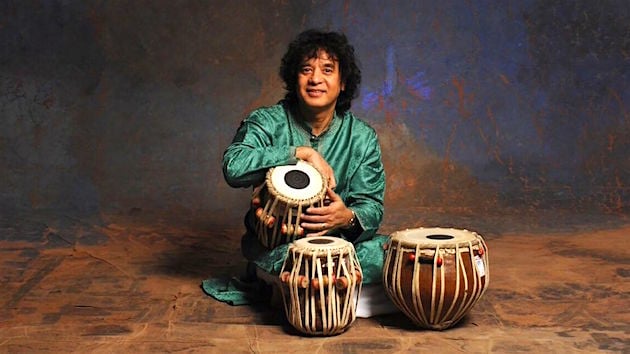
Hart inevitably brought Hamza to his bandmate Jerry Garcia, “who just loved the oud, and really got off on Hamza, who came and played with the Grateful Dead many times,” encouraging the band to book other world music acts as show openers. “I also introduced him to [elder Nigerian drummer] Babatunde Olatunji, and to Zakir, and everybody loved Hamza, he had a great sense of humor. But he was very serious about his instruments.”
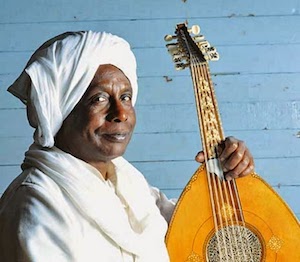
“Then we went to Egypt with Hamza, in ‘78,” Hart recounts. “On the last night, under a full moon, in front of the pyramids, Hamza and all his tarists, from a school in southern Egypt, came on stage, and then I walked out, and Jerry [Garcia] came out, and we played this song that Hamza had composed. There was a big bonfire, all these Bedouins coming off the desert, swaying in the night with their camels parked on the rim of the desert, around the perimeter of the audience. It was quite a sight!”
But Hart was equally impressed by the “soft, quiet, gentle side” of the tar in an intimate setting, and points out that “that’s what Hamza was, and what his people are like, soft and endless like the desert.” Hart also loved the sound of El Din’s oud — “all those overtones!” —, and thought he could surpass the quality of Vanguard’s initial recordings of the instrument. He included El Din on his 1984 Mickey Hart Collection recording, Music of Upper and Lower Egypt, and in 1991 assembled Hamza, Hussain, and Adepoju for sessions recorded as Planet Drum, which topped the Billboard world music chart and won the first-ever Grammy in that category.
“Hamza was part of our lives,” affirms Hussain, “and one of the great lessons I received from him was how to touch the drum, not with the intent of whacking out rhythm patterns but to caress it into being able to talk to you about the world that exists inside the drum itself. When you’re playing tabla, you’re taking the [North Indian classical] repertoire that has been pounded into you by your gurus; we never allowed the instrument to say its own piece. But the approach to playing tar is to coax the instrument to speak to you. It made me think, ‘I must try to find a way to be able to create that with my instrument.’ It happened [to him later] with Olatunji, with Airto [Moreira, a Brazilian percussionist and drummer] and again with Armando Peraza [Cuban percussionist with the Santana band], but if it had not happened with Hamza, I don’t know that I would have been looking for the same conversational input with other instrumental maestros.”
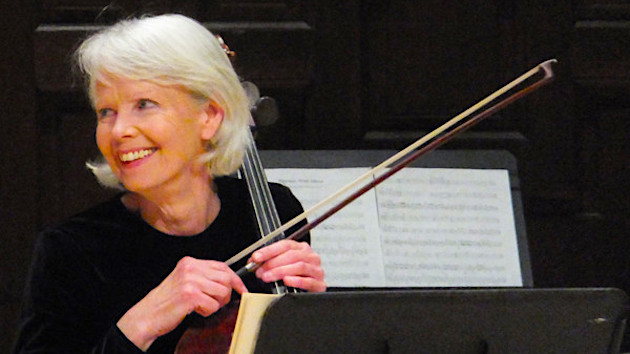
It was both easier and more important for cellist Joan Jeanrenaud to get to know El Din’s compositions and approach to music after a diagnosis of multiple sclerosis prompted her to depart the Kronos Quartet in 1999. She credits Terry Riley with having alerted Kronos to Hamza, and notes about their recorded collaboration on Escalay that “I never met anyone who did not like that piece; it’s sort of, like, universal in its appeal.” On her own, Jeanrenaud turned to Riley, El Din, and Rova Saxophone Quartet co-founder Larry Ochs to further her improvising. She’d first studied improvisation at Indiana University, and then with jazz saxophonist Joe Henderson after her arrival in San Francisco. But she’d “put that on the back burner, because I was so much more focused on my classical music training” with Kronos.
“When I started doing stuff on my own, I started using a looper,” an electronic means of repeating an ostinato or longer music segment, says Jeanrenaud, “and I realized I could play Escalay all by myself! Because Hamza’s piece has an introduction which is pizzicato, then an arco short stroke section, and then he goes into this rhythm part that he could play on the oud and sing the other part over. It was clear to me that I could put down the rhythm track, essentially, add things like longer tones or harmonics, and play the melodic line over it. But there’s also improvisation involved in Escalay, which can be unexpected. That the music can be adapted to other instruments is a great credit to the piece.”
In the early years of the new millennium, El Din and Jeanrenaud “developed this relationship where the two of us played together quite a bit. I got to know him much better and he was such a great guy. His work represents so much, and it has a lot to do with his country and with the Nile River and the fact that his village was flooded” after the construction of the High Dam on the Nile, in the 1950s.
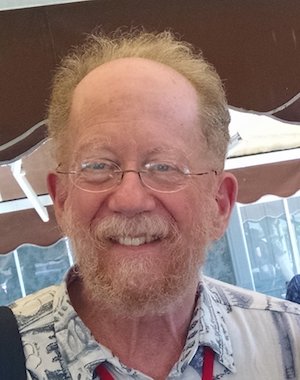
Atesh Sonneborn, an ethnomusicologist and former associate director of Smithsonian Folkways Recordings, first encountered El Din when he recruited him for the United Nations 30th birthday celebration, in 1975. As the later manager of El Din’s concert and recording career, Sonneborn heard his stories about “growing up with this sense of himself as from a people that stretch back eight or nine thousand years. He managed to create a synthesis of Nubian music, Arabic music, and African music, and to [also] learn how to write in Western form, with Western ideas of melody, harmony, and orchestration, with a stint at the Accademia di Santa Cecilia, in Rome. He stood on the Earth with a sense of the Earth’s people as one, and him as one small part of that — which is rare. People say he’s an early world music star, but I think he’s more a person that people attracted to authenticity and qualities of the heart and soul gravitate towards.”
Sonneborn has been asked by Mina Girgis to share some of his El Din stories on stage at the tribute. “It will be a chronological retrospective, not just live performances but also videos,” says Girgis. “We’ll be showing footage of him when he was nine years old, acting in a movie, and also acting with Elizabeth Taylor in Cleopatra [1963]. There’ll be interviews with friends, including Allaudin Mathieu, who taught at Mills College with Terry Riley [and founded the Sufi Choir]. The events will be narrated by another dear friend, Dr. Arif Gamal, who was a professor of Nubian poetry and environmental science at UC Berkeley. He’ll tell a lot of the stories of Hamza’s life, based on his autobiography.”
“As I understand it, a whole load of Hamza’s students will be there,” says Hart. He envisions the percussion jam, as “the best way to show your respect for someone who has touched so many ears.” “I imagine we’ll evoke Hamza as we have always done, with tars in our hands,” adds Hussain. “And we’ll hope that when we do this, we’ll have the patience to watch the rock grow and to wait for the audience to join us in that conversation. And we’ll hope that when it blossoms, Hamza’s spirit will come and join us, and make this a magical gathering.”
“When they approached me about this, I thought it was such a wonderful thing to honor Hamza,” says Jeanrenaud, “but this will probably be it, as far as my performing in public.” Progressively challenged by MS and unable to easily negotiate onstage events, she’s also blocked from the footwork needed to operate a looper. So she’s rearranged Escalay for herself and the three cellists who’ll join her at the tribute. Her own instrument “lends itself to this piece beautifully, because it can be very hypnotic and rich. It’s easy to divide up the parts, and there’s somebody who always has to hold the rhythm track down, but you can create a lot of rhythms within that.”
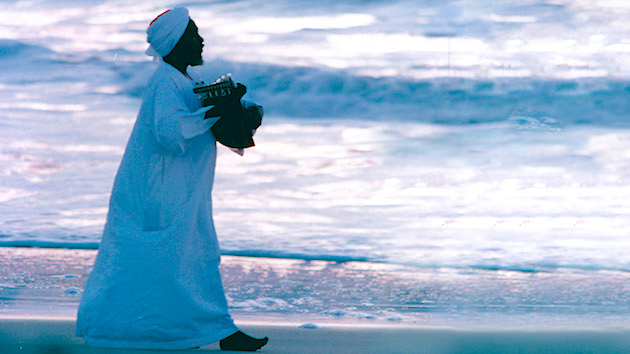
“It’s not by chance that Hamza ended up in the Bay Area in the ‘60s and developed all these relationships, because he was part of the human potential movement, even if he wouldn’t think of himself that way,” offers Girgis. “He represented that to many of these musicians who were trying to go beyond boundaries, trying to look at the world in a way that is not limiting, going down to the most fundamental truth of harmony, of rhythm, of sound, and you can hear that in his music. He found in the Nubian something that made him extremely global.”
Girgis and all the participants look forward to the rescheduling of the celebration.

